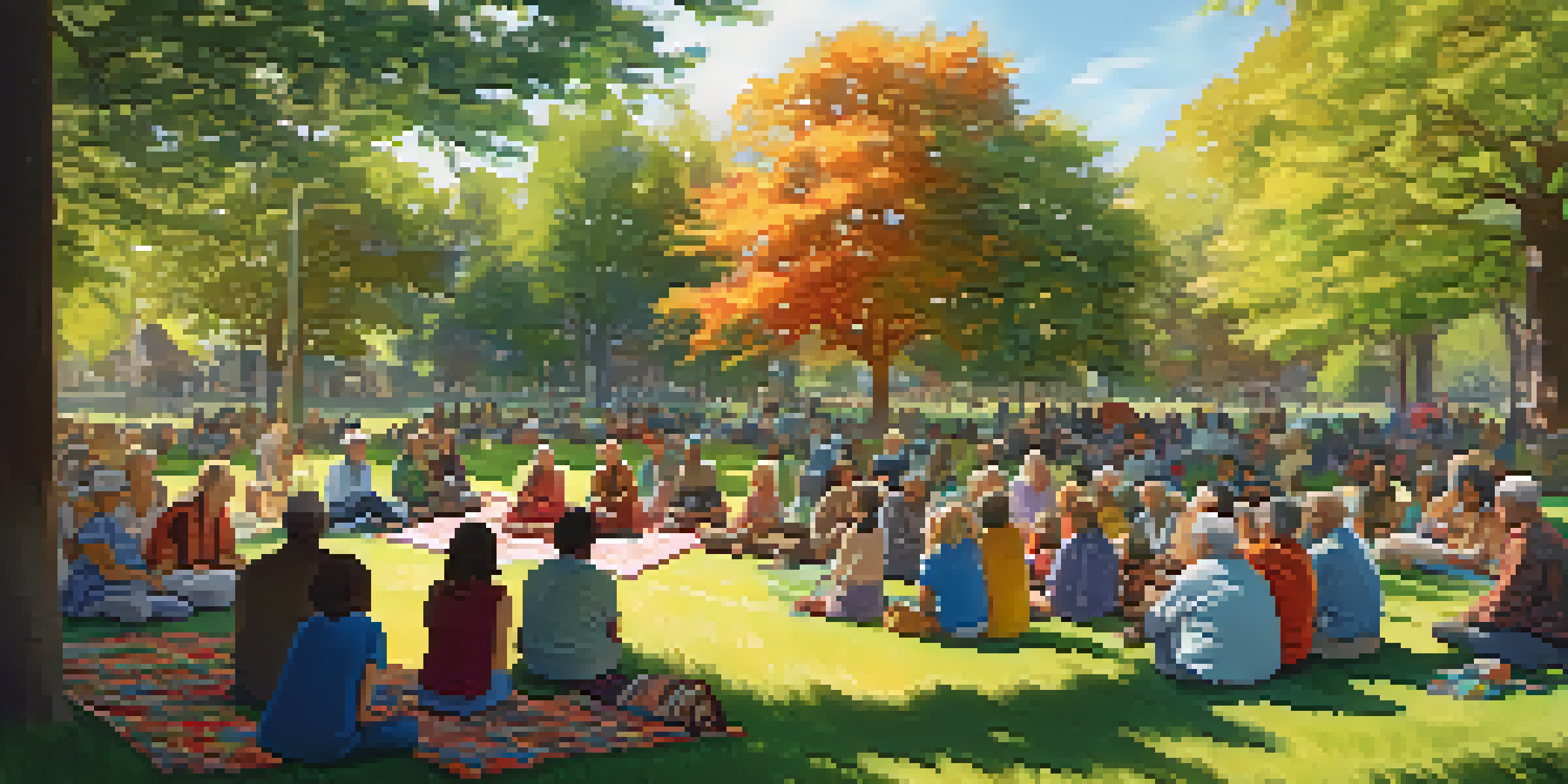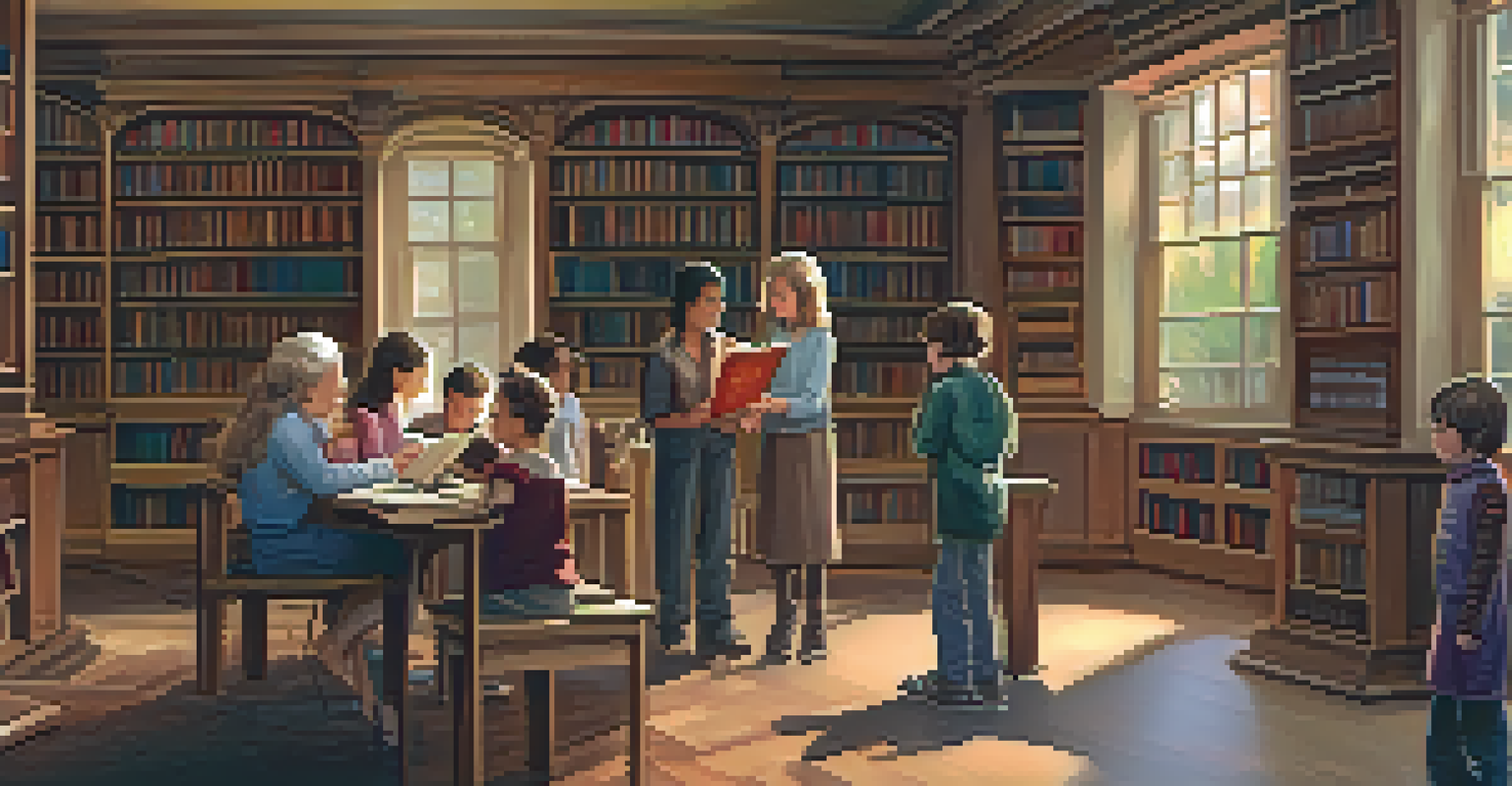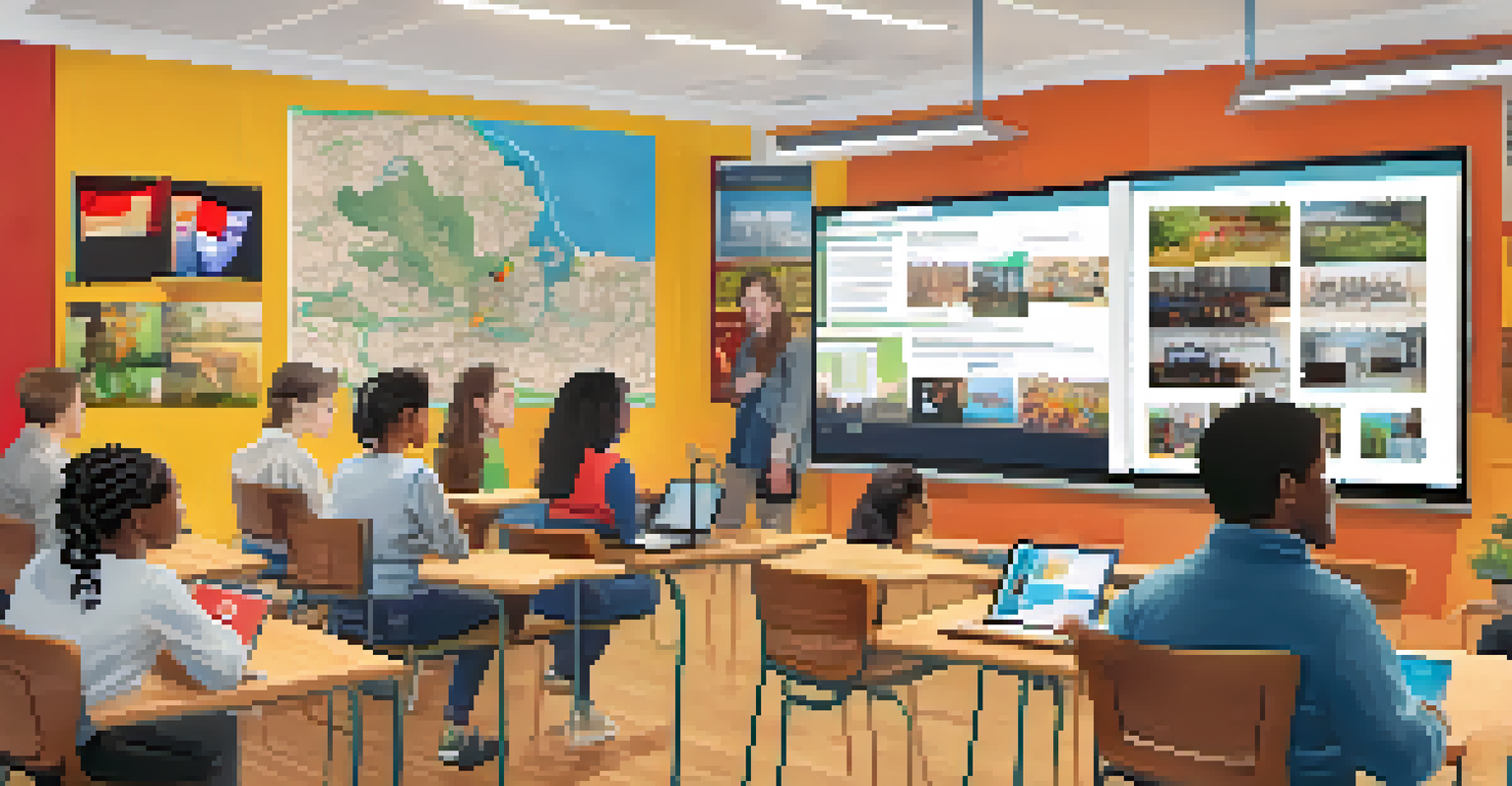The Role of Storytelling in Preserving Local Histories

Understanding the Essence of Local Histories
Local histories are the unique tales that shape our communities, reflecting the rich tapestry of experiences and traditions. They often encompass significant events, cultural practices, and the everyday lives of ordinary people. By understanding these stories, we can appreciate the diversity and depth of our shared heritage.
History is not a burden on the memory but an illumination of the soul.
These histories are not just about dates and facts; they capture the spirit and emotions of the places we call home. For instance, a small town's annual festival might commemorate an important historical event, weaving together personal memories and collective identity. When told well, these stories resonate with community members and newcomers alike.
Preserving local histories through storytelling fosters a sense of belonging and connection. It reminds us that every individual has a story worth telling, and these narratives contribute to a larger cultural mosaic that defines our communities.
The Power of Oral Traditions in Storytelling
Oral traditions have been a cornerstone of storytelling for centuries, allowing local histories to be passed down through generations. These stories, often told by elders, serve as a bridge between the past and present, connecting community members to their roots. The act of storytelling itself creates a shared experience that strengthens bonds among listeners.

For example, a grandparent recounting tales of their childhood can transport listeners to a different time, igniting imaginations and inspiring pride in their heritage. These narratives often include lessons learned, showcasing resilience and creativity that have shaped the community's identity. Each retelling adds a layer of richness and nuance to the story.
Local Histories Shape Community Identity
Understanding and preserving local histories fosters a sense of belonging and pride within communities.
Moreover, oral traditions empower marginalized voices that may not be represented in written records. By elevating these stories, communities can reclaim their narratives and ensure that their histories are not lost to time, fostering a deeper understanding of their unique cultural landscapes.
Written Storytelling: Capturing Local Histories
Written storytelling plays a crucial role in documenting local histories, providing a permanent record that can be accessed by future generations. This can take the form of books, articles, or digital archives, ensuring that stories are preserved in a tangible way. Written accounts can complement oral traditions, offering depth and context to the narratives being told.
Stories are the most powerful way to put ideas into the world today.
Consider a local historian who meticulously gathers stories from community members and compiles them into a book. This not only honors the voices of those who contributed but also creates a valuable resource for schools and libraries. Written storytelling can spark interest in local history among younger generations, encouraging them to explore their roots.
However, it's essential to approach written storytelling with sensitivity and inclusivity. By involving community members in the documentation process, we ensure that diverse perspectives are represented, creating a fuller picture of local histories. This collaboration fosters a sense of ownership and pride among community members.
Digital Storytelling: A Modern Approach
In today's digital age, storytelling has evolved to include various multimedia formats, allowing for greater creativity and outreach. Digital storytelling can encompass videos, podcasts, and social media campaigns, making local histories more accessible to a broader audience. This modern approach invites individuals to engage with the stories in innovative ways.
For instance, a local museum might create a virtual tour that combines images, audio recordings, and personal anecdotes, allowing viewers to experience the history from anywhere. Podcasts featuring interviews with local residents can bring these narratives to life, offering a personal touch that resonates with listeners. Digital storytelling can also encourage interactivity, inviting community members to contribute their own stories.
Oral Traditions Connect Generations
Oral storytelling bridges the gap between past and present, allowing communities to share their heritage and values.
Moreover, the internet allows these local histories to reach a global audience, connecting individuals with similar backgrounds or interests. This sharing fosters a sense of solidarity and encourages further exploration of local narratives, showcasing the importance of preserving history in an increasingly interconnected world.
The Role of Community Engagement in Storytelling
Community engagement is vital for effective storytelling, as it encourages active participation in the preservation of local histories. When community members are involved in sharing their stories, they feel a sense of pride and ownership over their cultural heritage. Engaging the community fosters a collaborative spirit that enriches the storytelling process.
For example, organizing storytelling workshops or events can provide a platform for individuals to share their experiences and connect with others. These gatherings create opportunities for dialogue and collaboration, allowing diverse voices to emerge. By celebrating local stories together, communities can strengthen their bonds and build a supportive network.
Additionally, community engagement can help uncover untold narratives that may have been overlooked. By reaching out to various groups within the community, storytellers can ensure that all perspectives are represented, creating a more comprehensive understanding of local history. This inclusivity enriches the storytelling landscape and honors the complexity of the community's heritage.
Preserving Local Histories for Future Generations
Preserving local histories is crucial for ensuring that future generations understand their roots and the journey that brought them to the present. By passing down these stories, we equip younger generations with knowledge about their heritage, instilling a sense of pride and responsibility to carry these narratives forward. This connection to the past can shape their identities and values.
For instance, schools can incorporate local histories into their curricula, teaching students about the significance of their community's past. Engaging projects, such as oral history assignments or local history days, can spark interest and encourage students to explore their roots. By making local stories a part of education, we ensure their relevance in a modern context.
Digital Storytelling Expands Reach
Incorporating digital formats makes local histories more accessible, engaging a wider audience and encouraging community participation.
Moreover, community initiatives can create spaces where stories are shared and celebrated, such as local history fairs or storytelling festivals. These events not only preserve the narratives but also foster intergenerational connections, allowing elders to pass down their wisdom to younger community members. Together, these efforts create a robust framework for preserving local histories.
The Impact of Storytelling on Community Identity
Storytelling has a profound impact on shaping community identity, as it encapsulates the shared experiences and values of its members. Through narratives, communities can articulate their unique characteristics and celebrate their diversity. This collective identity fosters a sense of belonging and pride, reinforcing the importance of local histories.
Consider a neighborhood that comes together to share stories about its founding and the challenges it has faced over the years. These narratives not only highlight the resilience of the community but also strengthen relationships among members as they find common ground. Storytelling can become a unifying force, bridging generational gaps and encouraging collaboration.

Ultimately, the stories we tell define who we are as a community. By embracing and preserving these narratives, we create a legacy that honors our past while guiding our future. This connection between storytelling and community identity underscores the importance of preserving local histories for generations to come.